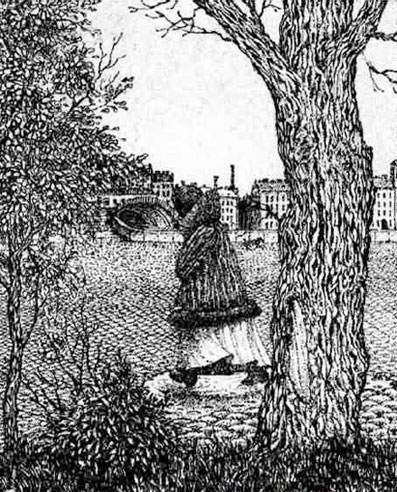The Eighth Letter
or Jesus, the Destroying Angel
James Jordan says the Revelation is like one of those old human anatomy teaching aids, the ones with layers of acetate. One starts with the skeleton and overlays the nervous system, arteries, organs, etc. They are all connected and yet each is a system that is individually identifiable. This is literature that is irreducibly complex.
For this to be possible in Biblical literature, many elements must have more than one function (as in our bodies). A simple illustration would be the structural significance of the book of Judges. In the slavery to Sabbath structure (the Dominion pattern), Judges is a sort of “Day 7.” But as Israel’s history progresses, this stage in the story becomes a “Day 3,” the (Promised) Land that ascended out of the waters of the nations, followed by the Davidic kings as the “Day 4″ ruling lights.
As a unit of seven letters, chapters 2 and 3 of Revelation serve multiple functions. The imagery involved is highly compressed, extremely dense: it has incredible gravity in every sense of the word. (See Totus Christus for a summary of Jordan’s exposition, or better yet, get the lectures. The depth of what is happening here will blow you away.)
Very often, from Call / Creation to Ascension, the Covenant Head has his own sevenfold pattern. He becomes the bread and wine on the table. But in a larger structure, this becomes Ascension (step 3) as the greater heptamerous pattern stretches out to the final feast of the Head and body at God’s table. We see this in John’s gospel (see Stirring the Waters.)
Revelation 1-5 are this initial structure. Jesus is Day 1, and John is “passed over” as Day 2, and exalted as “Day 3.” The seven Lampstand churches are the ruling lights at the centre of this pattern, and the ascended Christ as firstfruits Lamb, taking the throne, is the culmination of this section.
But the other facet of the letters becomes apparent as we move further out. The seven churches become those who are behind the door in the Passover (step 2) in a pattern that stretches from chapter 1 to chapter 11. Jesus is the destroying angel passing over them, passing judgment upon His people and correcting them in love. He is the blood on the door in the Holy Place (Ark = Light), and they are the human “furniture” (Lampstand = Lights).
This supports Jordan’s premise that the rest of the Revelation is the eighth letter. The Herods’ Jerusalem wanted to be a new beginning, an “eighth day.” All of the faults in the infant churches are shown to be full-grown in the Greater Jezebel.
This “eighth letter” describes her destruction. It is the New Covenant. As the Lamb breaks the seals, the Covenant blessings and curses plague and plunder the Land. To some, the scroll tastes of life, and to others, of death. It is the sword Jesus came to bring. He is the Destroying Angel who divides the living from the dead.
There would be No More Sacrifice For Sins. She would not be passed over as the Hebrews in Egypt, but passed through as the city of Jericho—totally devoted to the consuming fire. The new Israel would witness the old Holy Place’s de-Creation and its Lampstand being snuffed out. (See Thief in the Night.)



























May 31st, 2010 at 10:03 pm
Hey Mike,
Has anyone ever done an acetate for Rev? Sounds intriguing.